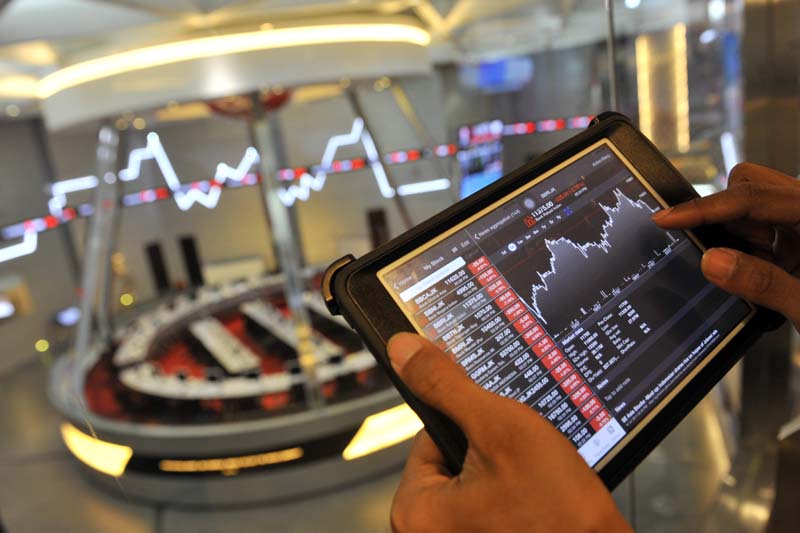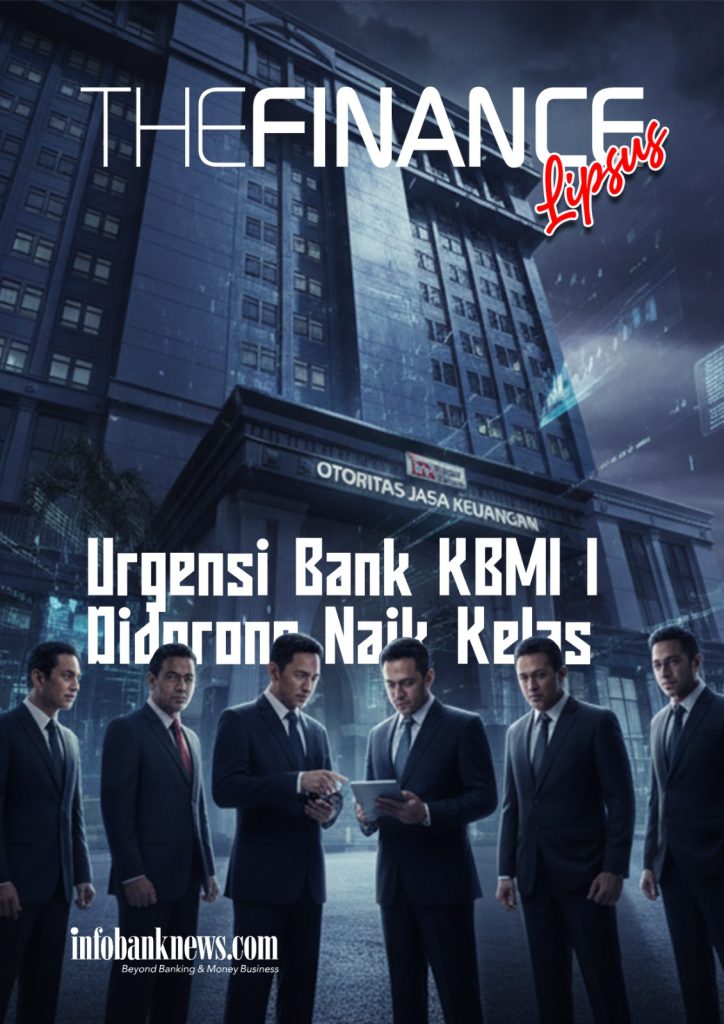The Indonesian retail banking market is still attractive despite being abandoned by Citibank. Many banks from abroad who are experts in corporate banking are competing to enter Indonesia to work on the retail market by annexing local banks that are close to the market. Competition is getting tighter with the presence of new competitors with digital business models. What is the future retail banking landscape? Why did BCA succeed in retail banking and was able to pass the pandemic well and become the best bank with excellent service? What are the result of the 2021’s Bank Service Excellence Monitor survey?
by Karnoto Mohamad
CITIBANK has just left The Indonesian retail banking market. Many people wonder about the future of it, considering Citibank, which is a pioneer as well as a champion and certainly has a strong market base in the card business segment. The bank, which is headquartered in New York, United States, was listed as the first bank in the country to implement e-banking in 1980, the pioneer of the automatic teller machine (ATM) in 1986, and a trend-setter in the credit card business which was launched in 1989.
From Citibank, Bank Niaga and Bank Mandiri learn how to implement their banker education system. Banks in Indonesia such as Bank Danamon, PermataBank, Commonwealth Bank, Bank Central Asia (BCA) also learn from Citibank, which in the 90s was known for its fast work system as the key to excellent service excellence. According to Batara Sianturi, Chief Executive Officer (CEO) of Citi Indonesia, Citibank has a strong and profitable consumer business in Indonesia and has a highly skilled and dedicated team. “We strive for client excellence, controls excellence, and operational excellence,” he said at the Human Capital Summit held by Infobank and the Indonesian Bankers Association (IBI) in early April.
With Citibank’s service policies and processes, a number of banks are lining up to buy the consumer business portfolio that Citibank will sell. Batara was reluctant to tell which banks were interested in buying. However, a senior official at a regional bank said a number of banks from Southeast Asia were studying to buy a portfolio of Citibank’s consumer business in 13 countries. From Singapore there are DBS, OCBC and UOB. From Malaysia, there are CIMB and Maybank. Reportedly, Standard Chartered Bank and banks from Japan are also interested.
Officially, DBS confirms that they are studying it. “We are open to study and consider good opportunities in countries where DBS Bank has a retail business such as Indonesia, India and China, and we can offer digital banking services capabilities to provide the best service to customers,” said a DBS spokesperson to Infobank.
Bankers believe that Citibank’s departure from the retail banking market is not a signal that the potential for the retail market in Indonesia is no longer attractive. An analyst said that Citibank is globally strong in wholesale banking and it is no longer has a competitive advantage in the consumer segment in a number of countries due to market changes. Citibank has also acknowledged that its consumer business is less profitable so that its resources are better used to manage a more profitable business. “Asia is very important to our corporate strategy, and we will allocate resources for profitable growth,” said a Citi spokesman in Hong Kong as it was quoted by taiwannews.com last month.
A number of national bankers who were contacted by Infobank stated that the Indonesian retail banking market is still attractive despite being abandoned by Citibank. According to Lauren Sulistiawati, CEO of Commonwealth Bank, Citibank’s decision does not portray the retail banking market in Indonesia because it is more of a global strategy. “The potential of the retail banking market in Indonesia is still very promising, with the fourth largest population in the world. Because the penetration rate is still relatively low, we project that it will grow rapidly with the advent of digitalization,” he told Infobank last month.
Bank DBS, which plans to buy the Citibank card business portfolio, also sees the potential for retail banking in Indonesia to be still attractive. “The potential of retail banking in Indonesia is one of the fastest growing in Southeast Asia. With new product innovations or types of services such as Digibank supported by a large population and not yet having or being served by formal banking, the industrial space is still very wide, ”Paulus Sutisna, CEO of Bank DBS Indonesia, told Infobank last April.
The same thing is also said by Rivan A. Purwantono, CEO of Bank KB Bukopin. “The retail business is not only cards, but there are other consumer businesses and MSMEs. Precisely, it is because of the large retail market in Indonesia, banks from abroad are competing to enter here,” he told Infobank last month. Rivan gave an example that the South Korean KB Kookmin Bank was interested in controlling the majority of Bank Bukopin’s ownership because it wanted to work on the retail market. “The interest of KB Koomin Bank is of course inseparable from the large potential of the retail banking market in Indonesia, so they are trying to take the opportunity to increase the share of ownership in Bank Bukopin, which by nature is in the retail segment which is 57% and has 480 outlets,” he added.
Before KB Koomin Bank entered Indonesia, a number of banks from Korea were already here. They have been operating quietly in Indonesia for decades. Initially they were very conservative with a focus on working on special markets, especially Korean business people in Indonesia, but then they tried to enter the retail segment. For example, Bank KEB Indonesia which entered in 1968 which later merged with HanaBank which acquired Bank Bintang Manunggal in 2007. Then, Bank Woori Indonesia, which came in Indonesia in 1995 then acquired 33% of the shares of Bank Saudara in 2014. In recent years, Korean banks have tried to move faster by working on the retail market. There is Shinhan Bank, which has acquired Bank Metro Express and Apro Financial, which has taken over Bank Dinar in 2016, and Industrial Bank of Korea, which was trying to control 87.30% of Bank Agris’ shares.
Japanese banks that have been in Indonesia for a long time have also done the same thing and have focused on working on a niche market in the Indonesian market. There is Bank Resona Perdania which was founded in 1958 and Bank Mizuho which entered Indonesia in 1989. Likewise Mitsubishi UFJ Financial Group (MUFG) which entered Indonesia in 1968 and Sumitomo Mitsui Banking Corporation (SMBC) which began to exist in Indonesia in 1989. Those banks that are strong in corporate banking are trying to enter the retail segment by acquiring local banks. That’s why MUFG controlled 74% of Bank Danamon’s shares in 2018 and SMBC acquired BTPN.
In addition to create new growth spaces, the retail segment is also useful for balancing and improving the quality of banks’ assets when portfolios in the corporate segment are under pressure. For example Commonwealth Bank which experienced a crisis in 2015 to 2016, then Lauren Sulistiawati, as the new CEO changed business direction from corporate banking to retail banking and MSMEs. As a result, Commonwealth Bank succeeded in making turn around. State-owned banks, such as Bank Mandiri and Bank Negara Indonesia (BNI) used to have “genes” in the wholesale banking segment which then worked on the retail market after the 1998 monetary crisis.
The retail banking market has also proven to have given birth to a very valuable bank like BCA. BCA is the leading retail bank in Indonesia. The bank’s performance grew consistently and its assets overtook BNI in the corporate segment in 2003. In the midst of difficult times due to the COVID-19 pandemic, BCA succeeded in overtaking Bank Rakyat Indonesia (BRI), in the MSME segment, as the bank that made the largest profit in 2020. In the region, BCA is also noted as the best retail bank and the bank with the largest market capitalization in Southeast Asia.
BCA has long developed its excellence in retail banking. In the early 1990s, BCA began building ATMs. Not only balance checks, cash withdrawals and transfers, payment features are also available at BCA ATMs. Citibank credit cards’ holders can pay bills at BCA ATMs. Likewise, customers who become Telkom customers. In the early 2000s or when other banks were enthusiastic about expanding the branch network, BCA had already been keen to develop electronic services.
This electronic service is BCA’s advantage in the retail market, where one of the main indicators is a solid high CASA ratio of up to 77% of third party funds (DPK) which amounted to Rp 642 trillion in 2020. In addition to low-cost funds, an indicator of BCA’s success in the retail banking business is its size. Its customer base of 24 million accounts allows the bank to reap significant fee-based income.
According to Jahja Setiatmadja, CEO of BCA, the application of technology is a prerequisite for success in the retail banking market, especially in the digital era. “We believe that customer preferences for digital services will be even higher. Therefore, BCA always strives to provide a trusted transaction banking service ecosystem in managing changes in people’s ‘new normal’ behavior towards digital, “he explained during his presentation in a Webminar held by Infobank some time ago.
In addition to maintaining a solid performance quantitatively, BCA has also succeeded in becoming the best bank in excellent service according to the 2021 Bank Service Excellence Monitor (BSEM) conducted by Marketing Research Indonesia (MRI) using the mystery shopping method. Like last year, this time BSEM still gives an assessment of excellent service quality via digital channel with a score of 60% and walk in channel with a score of 40%. BCA took the position of Commonwealth Bank which at BSEM last year was still in the first position. Consecutively, commercial banks’ prime service ratings and scores in BSEM 2021 are (1) BCA <85.64>; (2) Commonwealth Bank <84.65>; (3) PermataBank <83.16>; (4) BNI <82.01>; and (5) BRI <79.88>.
In the group of regional development banks (BPD), the highest score ranking for excellent service this year was taken by Bank Sumsel Babel from Bank DKI. Sequentially, BPD’s prime service rankings and their scores in BSEM 2021 are (1) Bank Sumsel Babel <77.21>; (2) Bank Jatim <77.17>; (3) DKI Bank <76.65>; (4) Central Java Bank <76.54>; and (5) Bank Riau Kepri <75.64>. In the group of Islamic commercial banks, the positions are (1) Bank Syariah Indonesia <80.95>; (2) BCA Syariah <78.86>; (3) Bank Muamalat <77.17>; (4) BJB Syariah <76.47>; and (5) Bank Mega Syariah <72.46>. Meanwhile, in the group of sharia business units, there are (1) Permata Bank Syariah <88.30>; (2) Bank OCBC NISP Syariah <78.32>; (3) Bank Danamon Syariah <74.26>, (4) BTN Syariah <73.09>; and (5) Maybank Syariah <68.38>.
In the future, the challenges for banks to improve or maintain the quality of their prime services are increasingly dynamic. Likewise, facing competition in the retail banking market, which has changed considerably due to technological advances and the emergence of new players such as financial technology (fintech) and neobanks or digital banks. In fact, e-commerce has become a new competitor in retail banking because it provides electronic money (e-money), offers investment and product purchase installments, and provides cash loans. The COVID-19 pandemic, which has radically changed the social and economic landscape of the market, has become a momentum for these new competitors.
The retail banking market has indeed become a little bit problematic, but the market potential is still very attractive due to the large population and low penetration of the financial market. However, in order not to be crushed by competition, traditional banks must digitize their products, distribution and services. The motivation for traditional banks to switch to digital is not only for security and cost efficiency, but must prioritize consumers’ needs in a changing environment. The ability of traditional banks to enter the digital ecosystem is also the main key to be able to survive in the evolving retail banking business. (*)













